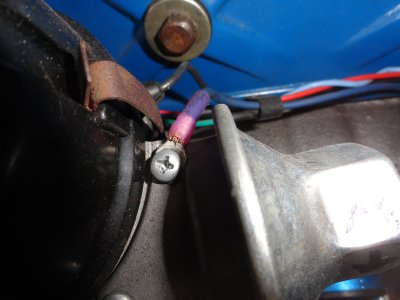Hello,
I am at my wits end on trying to get my mustang to start. This is my first timeowning a classic car and have been consuming as much knowledge as possible. It sat for 2 years from the PO, and but before he daily drove it and he always had to use starting fluid to start it up.
Since its been in my possession, I have replaced much of the electrical system:
Battery, all cables to/from solenoid, starter, starter solenoid, and 1-wire alternator, spark plugs + wires, distributor cap, and rotor.
From PO, it has a 22gallon fuel tank and Petronix Ignitor 2. I confirmed that it receives 12v during start. I confirmed with a inline spark tester that each cylinder is getting spark.
I have checked timing with #1 piston at TDC, and that the rotor is pointing at #1 at 12* BTDC, but there is a chance I was doing this wrong. I had my friend put his thumb over the spark plug hole to confirm that there was air coming out, and putting a stick in for it to be pushed out at the highest point. My next step is to get a piston stop tool to confirm, but please let me know if this is correct.
When cranking the engine, carburetor will backfire, and some popping from the exhaust. I also confirmed fuel is coming into the carb by pulling on the throttle. Messing around with advancing/retarding the distributor, one way will cause only popping and no backfire, and the other way will only cause backfire from carb and no popping from exhaust.
At this point, I believe the timing or the Autolite 1100 is the issue. Please let me know your thoughts!
Pictures:
I am at my wits end on trying to get my mustang to start. This is my first timeowning a classic car and have been consuming as much knowledge as possible. It sat for 2 years from the PO, and but before he daily drove it and he always had to use starting fluid to start it up.
Since its been in my possession, I have replaced much of the electrical system:
Battery, all cables to/from solenoid, starter, starter solenoid, and 1-wire alternator, spark plugs + wires, distributor cap, and rotor.
From PO, it has a 22gallon fuel tank and Petronix Ignitor 2. I confirmed that it receives 12v during start. I confirmed with a inline spark tester that each cylinder is getting spark.
I have checked timing with #1 piston at TDC, and that the rotor is pointing at #1 at 12* BTDC, but there is a chance I was doing this wrong. I had my friend put his thumb over the spark plug hole to confirm that there was air coming out, and putting a stick in for it to be pushed out at the highest point. My next step is to get a piston stop tool to confirm, but please let me know if this is correct.
When cranking the engine, carburetor will backfire, and some popping from the exhaust. I also confirmed fuel is coming into the carb by pulling on the throttle. Messing around with advancing/retarding the distributor, one way will cause only popping and no backfire, and the other way will only cause backfire from carb and no popping from exhaust.
At this point, I believe the timing or the Autolite 1100 is the issue. Please let me know your thoughts!
Pictures:
Last edited:

